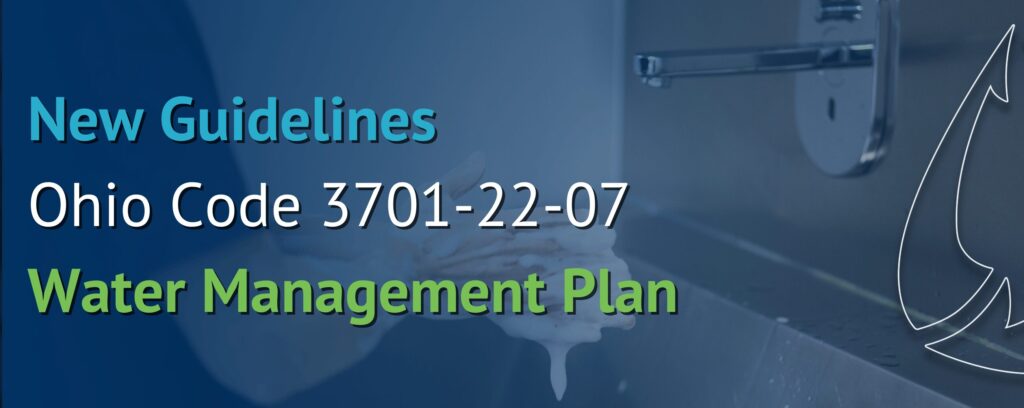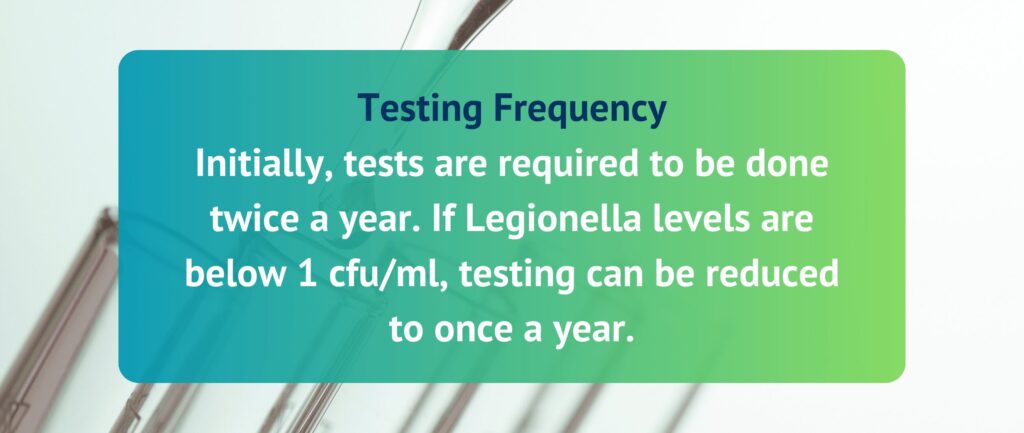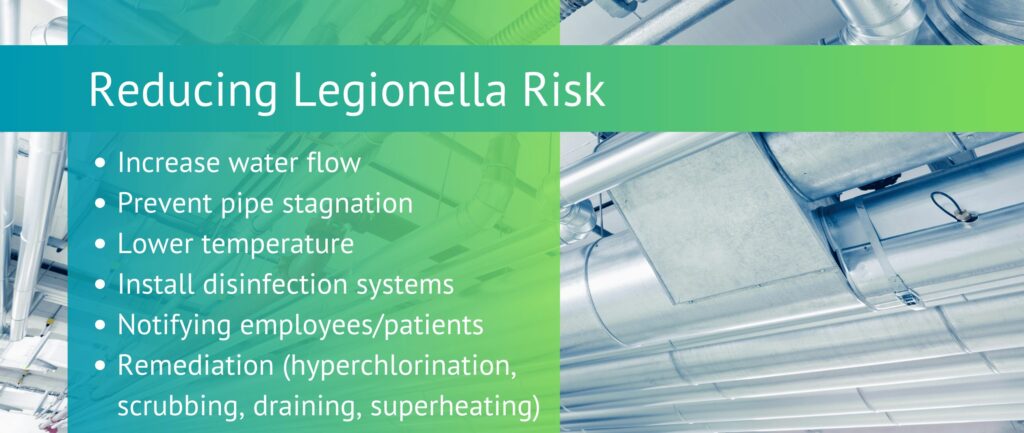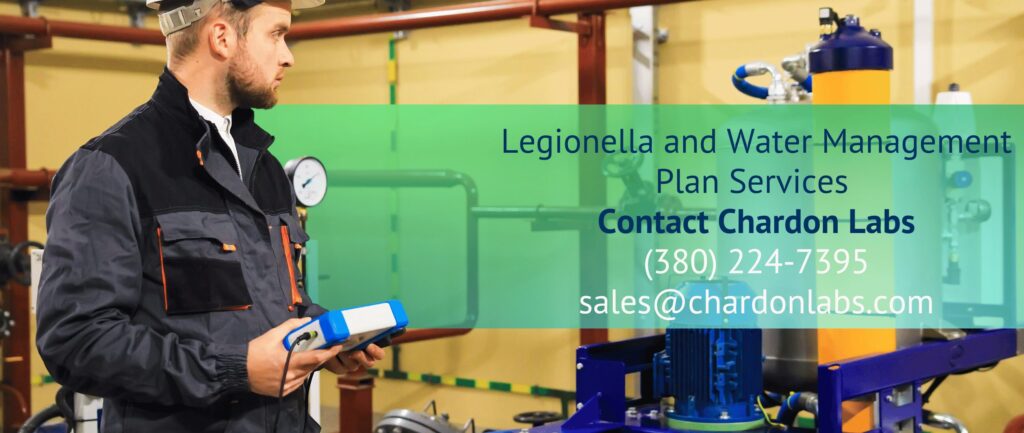
This new Ohio rule requires a water management plan to help prevent the prevalence and transmission of waterborne pathogens (Especially Legionella bacteria) in hospital water. This applies to both potable water (bathroom faucets, showers, water used to clean medical devices) and non-potable water (cooling towers, decorative fountains). It is effective as of September 14, 2024.

Biannual validation testing is required for the first year (minimum 4 months and maximum 8 months in between testing). The second year requires testing annually if the previous two tests came back at less than 1 cfu/ml of Legionella.
A single cold water main sample connected to the water source or public water system should be taken. Additionally, representative samples of proximal and distal locations for each hot water distribution system and hot water loop. Lastly, it is necessary to record the maximum temperature on the hot/cold water samples, as well as the total or free chlorine present. Lastly, if the testing is after a recent Legionella outbreak you must preserve and provision the Legionella sampling (swab and cultured water). This sampling is to be sent to the Ohio Department of Health’s Laboratory.
Chardon Labs recommends having a water management plan for all healthcare facilities. Elderly, immunocompromised, smokers and other at-risk populations are likely to be at healthcare facilities. These groups are the most vulnerable to contracting Legionnaires’ disease from water.
If you need help with your water management plan, reach us at 380-224-7395 or message us. We do not charge for a facility survey!
Completing a CDC Legionella Environmental Assessment Form, plus a copy of the previous year’s water management plan, is required. Conforming to several CDC Legionella testing and control measures is also necessary.
You must contact the Ohio Department of Health as well as the health district local to you in the following cases:
Utilizing point-of-use filters rated for absolute .2 biological microns. These are to be FDA-approved. These filters should be put on hot water fixtures in reasonable locations or on separate, isolated water loops. They also need to be utilized where a Legionellosis case stayed, received care, or the possible contamination site. If the hospital tests Legionella of less than 1 cfu/ml, you can avoid point-of-use filters with approval from both the Ohio Department of Health and your local health district.

To reduce the risk of waterborne contaminant outbreaks, install disinfection systems, provide short-term remediation, adjust hot water temperatures for storage tanks/circulation systems, remove water stagnation, and increase water flow in very low flow areas. Another task is to contact patients, employees, and visitors with the actions taken to minimize future exposure risk.
Using the steps in the aforementioned “Testing Procedure,” perform testing after remediation is done.
This applies to all hospitals that are not rural or critical access hospitals. In addition, those hospitals that have maternity units or newborn nurseries. These new guidelines apply to the following hospital service fields: Medical staff, medical records, nursing, pharmaceutical, laboratory, radiologic, food/dietetic, and physical environment. The water management program is the group responsible for a water management program that is up to the new code.
Some of the rules implemented in this new code are taken from Title 42 CFR 482. In this title, federal requirements are described for water management in hospitals that utilize Medicare.
Recommended CDC resources for this new law can be found under Guidelines for Environmental Infection Control in Health-Care Facilities and Toolkit: Developing a Legionella Water Management Program.

Chardon Labs offers Legionella testing, potable and non-potable water testing, water management plans, and remediation services. Need help? Book a free survey today by sending a fast contact form or call us at this number 380-224-7395. In Ohio, we provide services in Akron, Dayton, Cincinnati, Cleveland, Columbus, Toledo, and Youngstown, as well as every other part of Ohio. In addition to this, we also can help you in these 13 states.
Please note that this does not constitute legal advice and does not replace reading the guidelines thoroughly.